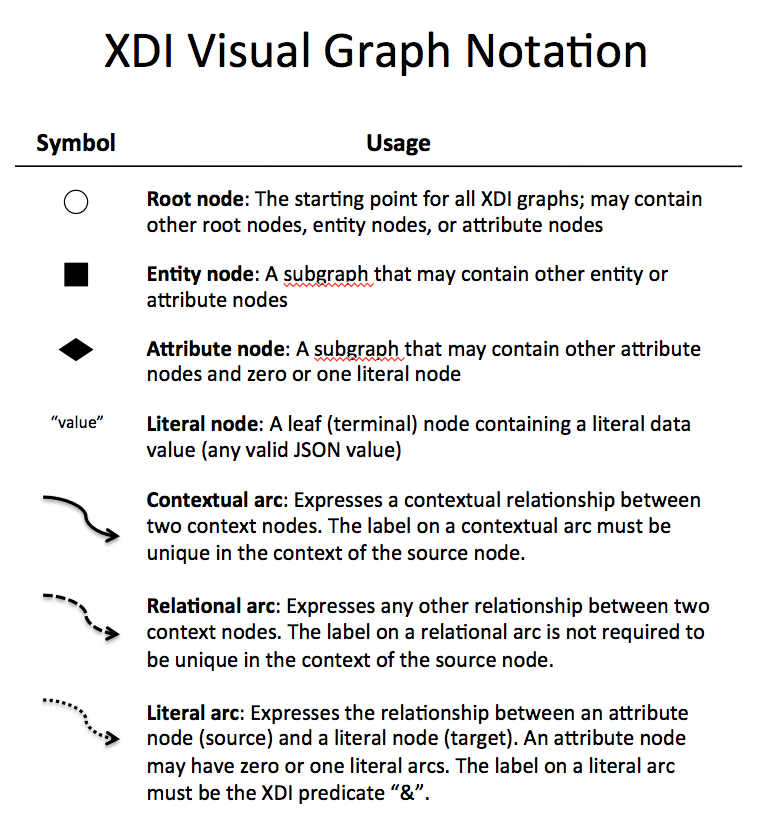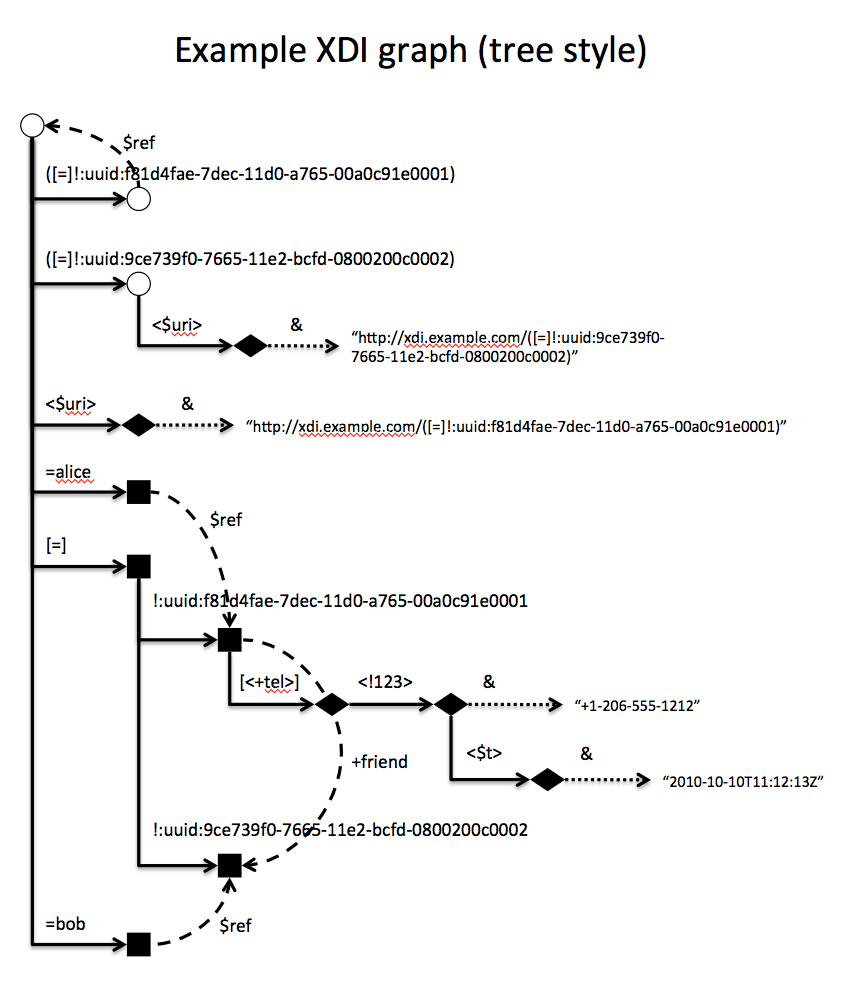On Wed, Jan 28, 2015 at 7:56 AM, =Drummond Reed <drummond.reed@xdi.org> wrote:
As I'm working on the "How XDI Builds on RDF" paper, I need to include some visual XDI graphs. I'm doing these in Powerpoint because I need the precision.As I began preparing the examples, it struck me that because we no longer have value nodes, it would be far more intuitive to:
- Just use one dedicated geometric shape for each of our major node types:
- Circle (open) for root nodes (suggestive of the parentheses used for roots in XDI syntax)
- Square (solid) for entity nodes
- Diamond (solid) for attribute nodes (suggestive of the angle brackets used for attributes in XDI syntax)
- Don't use any geometric shape for a literal node, rather just have the literal arc point to the JSON value exactly as it would appear in JSON, e.g.,
- "string" for a JSON string (including "" for the empty string)
- 123 for a JSON number
- true
- false
- null
- [1,2,3] for a JSON array
- { "key": "value" } for a JSON object
Thoughts?

